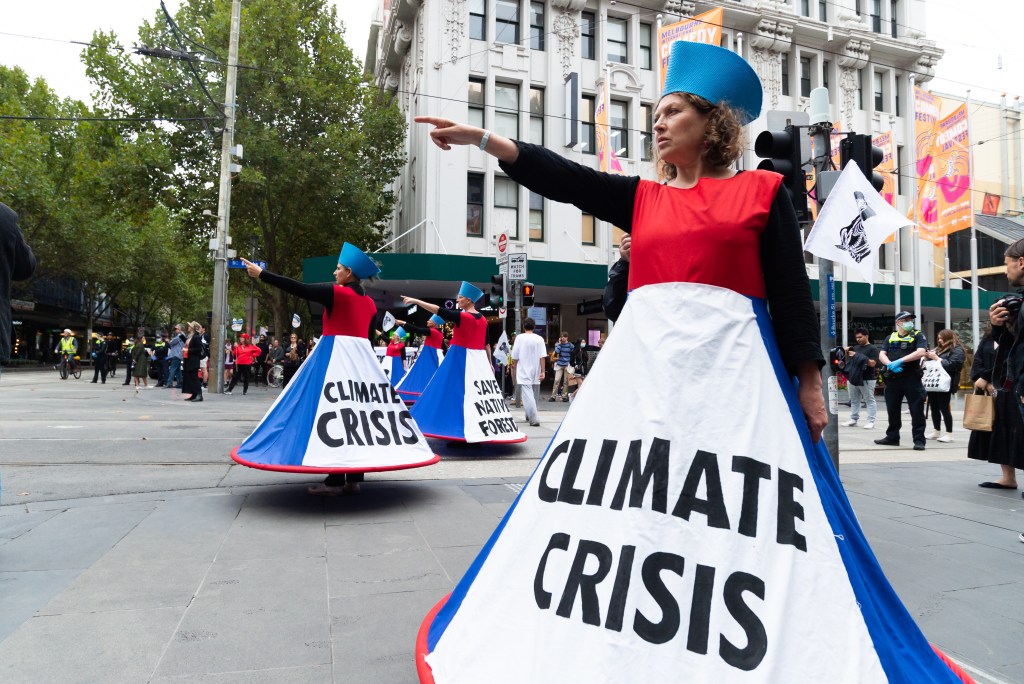Australia ‘lagging’ and needs to catch up quickly on climate change, investor groups say.
Influential investor groups have called on the nation’s top listed companies to close the gap with Europe and significantly improve their sustainability reporting, ahead of the global adoption of two disclosure standards formulated by the International Sustainability Standards Board.
Investor Group on Climate Change policy director Erwin Jackson said Australia had been lagging and “needs to catch up quickly”.
“The point of the standards is to make it easier for investors to assess risks and opportunities, which is critical for the efficiency of markets,” Jackson said.
“Companies that are leading the way will attract more capital.”

IGCC, which focuses on the impact of climate change on the financial value of investments, represents investors around the world with more than $20 trillion in assets under management.
Members of the group are fiduciaries for more than 7.5 million people in Australia and New Zealand.
The Australian Council of Superannuation Investors, which speaks for 26 local and international asset managers with more than $1 trillion under management, echoed the thoughts of the IGCC.
ACSI chief executive Louise Davidson said strong disclosure from some listed companies had provided a sound basis for adoption of the ISSB’s draft standards, although many local companies needed to lift the quality of their reporting.

“ACSI supports a phase-in period for the standards with transition arrangements that encourage consistent improvement across the market, including where companies have existing good practice and are encouraged to continue to progress,” Davidson said.
The pace of implementation and quality of ESG (environmental, social and governance) reporting has become a global issue as pressure intensifies to achieve an orderly transition to net zero carbon emissions by 2050, in line with the Paris Agreement.
The ISSB, formed by international accounting standards-setter, the International Financial Reporting Standards, is critical to the formation of a single set of disclosure standards through a merger of voluntary ESG frameworks.
Uniform standards would enable the ASX200, for the first time, to assess their reporting maturity against standards endorsed by the IFRS Foundation.
Earlier this year, the ISSB released exposure drafts for its first two standards: the first on disclosure requirements for general sustainability (S1) and the second on climate (S2).
Many companies are still working through the proposed standards, which are not yet finalised or mandatory.
How will the risks play out?
Australian Prudential Regulation Authority deputy chair Helen Rowell said in a speech on Friday that it was critical for participants in the financial system – investors, entities, consumers and regulators – to have access to high-quality, reliable and comparable information.

“While it’s barely possible to open a newspaper or attend a business conference without climate risk coming up, the response remains hampered by the lack of information on how these risks will play out over the coming decades across different industries,” Rowell said.
“And it is on this problem that Australia’s main financial regulators are most keenly focused.”
Rowell said APRA would release its analysis of a climate vulnerability assessment of the nation’s five major banks, including the so-called big four commercial banks and Macquarie Group, next month.
The CVA sought to answer three questions – the impact of different climate scenarios on the banks’ financial resilience and systemic stability; how the banks would act to mitigate the impact, and how prepared they were to do so.

Significantly, she said, the impact was uneven across regions and business sectors, and some segments of bank lending portfolios were exposed to relatively higher risk.
“In other words, the system overall might remain resilient, but significant pain is likely to be experienced in some specific areas,” Rowell said.
“The CVA also highlights how banks may adjust their portfolios over a period of several decades in light of these risks, and the impact these management changes may have on the banks’ sensitivity to climate risk.”
The decision to publish the aggregated CVA results highlighted the importance of information in addressing climate risk.
Others – not just regulators – would learn from the data, and it would help put the building blocks in place for high-quality and comparable climate-related.
Rowell said enhanced transparency was consistent with the Federal government’s commitment to introduce mandatory disclosure requirements, aligned with the international standards.
Until a global benchmark is developed for all aspects of ESG reporting, companies will continue to navigate multiple standards, including the Global Reporting Initiative, the Sustainability Accounting Standards Board, the Taskforce on Climate-Related Financial Disclosures (TCFD) and guidance from the World Economic Forum.
The ISSB has said it wants to formalise the two ESG measurement and disclosure standards by the end of this year, once it reviews the extensive feedback.
Davidson said adoption by companies of mandatory climate disclosures in line with the TCFD would prepare the market for the ISSB standards.
“It’s a logical next step for Australia,” the ACSI boss said.
